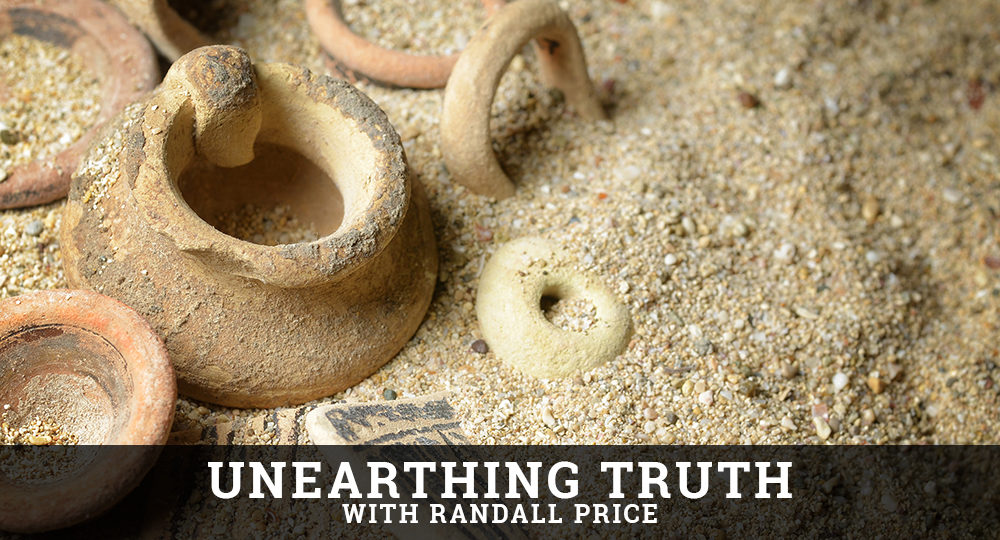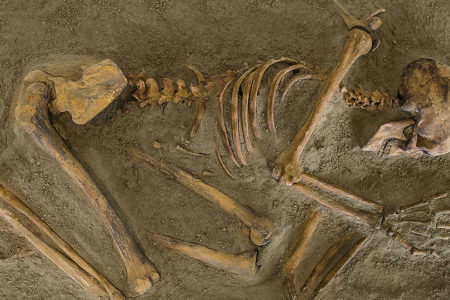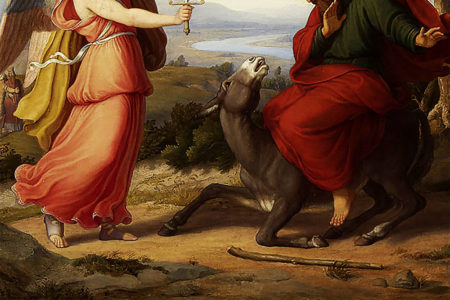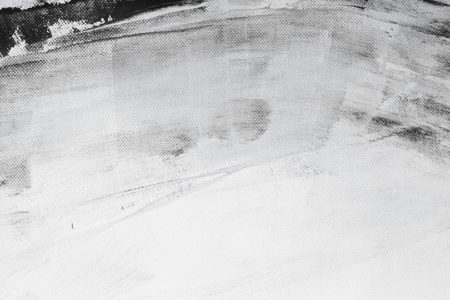God’s Guardians
Biblical cherubim are heavenly creatures that act as God’s guardians. Archaeologists have discovered in Ancient Near Eastern (ANE) iconography and architecture cherubim-like figures that mirror their biblical function and help us visualize what they may look like.
Genesis 3:24 contains the first mention of these creatures, whose name in Hebrew may come from the old Akkadian word karabu, which means “to pray,” or “to bless.” If so, the word may imply their role as intercessors between God and His creation.
The verse describes the dramatic scene when God drove Adam and Eve from the Garden of Eden and placed cherubim, brandishing a flaming sword, to guard its entrance. The cherubim were stationed east of Eden to prevent invasion from outside (the place of exile), thus preserving the Garden’s sanctity and its Tree of Life.
Cherubim also guarded God’s Shekinah Glory in the Tabernacle and Temple. They were placed over the Ark of the Covenant, the footstool of the Lord, to guard the Shekinah Glory, which appeared as a fiery cloud above the mercy seat (Ex. 25:18–22; cf. 1 Ki. 6:23–28; 8:6–7; 2 Chr. 3:10–13). Cherubim imagery filled the Tabernacle and Temple: It adorned the Tabernacle’s curtains (Ex. 26:31); the Temple’s walls, doors, paneling, and lavers (1 Ki. 6:27–35; 7:29, 36); and the veils of both (Ex. 26:31; 2 Chr. 3:14).
Archaeological discoveries reveal pagan parallels to the cherubim’s guardian function. A pair of sphinxes guards the entrances to the ‘Ain Dara Temple in Syria. Excavations in Samaria have produced ivory plaques that decorated the royal palace, with cherubim whose wings touched, protectively flanking a central figure in a shrine. These carved reliefs provide the closest geographical and chronological examples to the interior decorations of Solomon’s Temple, where a pair of 15-foot wooden cherubim flanked the Ark of the Covenant within the inner sanctuary (1 Ki. 6:23–28).
Archaeologists also have found images of winged creatures flanking the thrones of ancient kings: the relief of Ahiram, king of Byblos, seated on a cherub throne, and Pharaoh Tutankhamen’s golden throne chair, with arms made like winged lions, and his burial chamber surrounded on four sides by pairs of winged human figures.
What do cherubim look like? Based on the Israelite imagery in the Tabernacle and Solomon’s Temple, it seems their appearance was once known. But by the first century AD, that knowledge likely had vanished. First-century Jewish historian Flavius Josephus declared, “No one can tell what they [cherubim] were like.”1
But the cherubim-like figures in ANE iconography on monumental architecture and in relief carvings and seals provide possible insights. The ANE architecture depicts cherubim as creatures that are part human, part animal. In Sumer, the figures are of winged humans; in Egypt, Syria, and Israel, they are either winged humans or composites of lions and humans (sphinxes); in Assyria and Babylon, they are composites of winged bulls and humans; and in Greece, composites of birds and humans (griffins).
The human part may suggest human intellect and emotion, while the winged-animal part may represent power and speed. Combined, the traits present a creature of an order above any earthly creation—the angelic.
Though it is difficult to determine to what degree ANE archaeology represents biblical cherubim (local pagan mythology likely influenced the images), it does convey two truths: God is holy, and cherubim help guard His holiness.
As God’s guardians, cherubim hovered over the Ark of the Covenant, making it possible for the high priest to represent sinful man before God. In this way, these mysterious angelic beings played a part in the covering of sin at the Tabernacle, which prefigured the great provision of atonement through Jesus the Messiah as our mercy seat (Rom. 3:25).
ENDNOTE
- Flavius Josephus Antiquities of the Jews 8.3.3.








